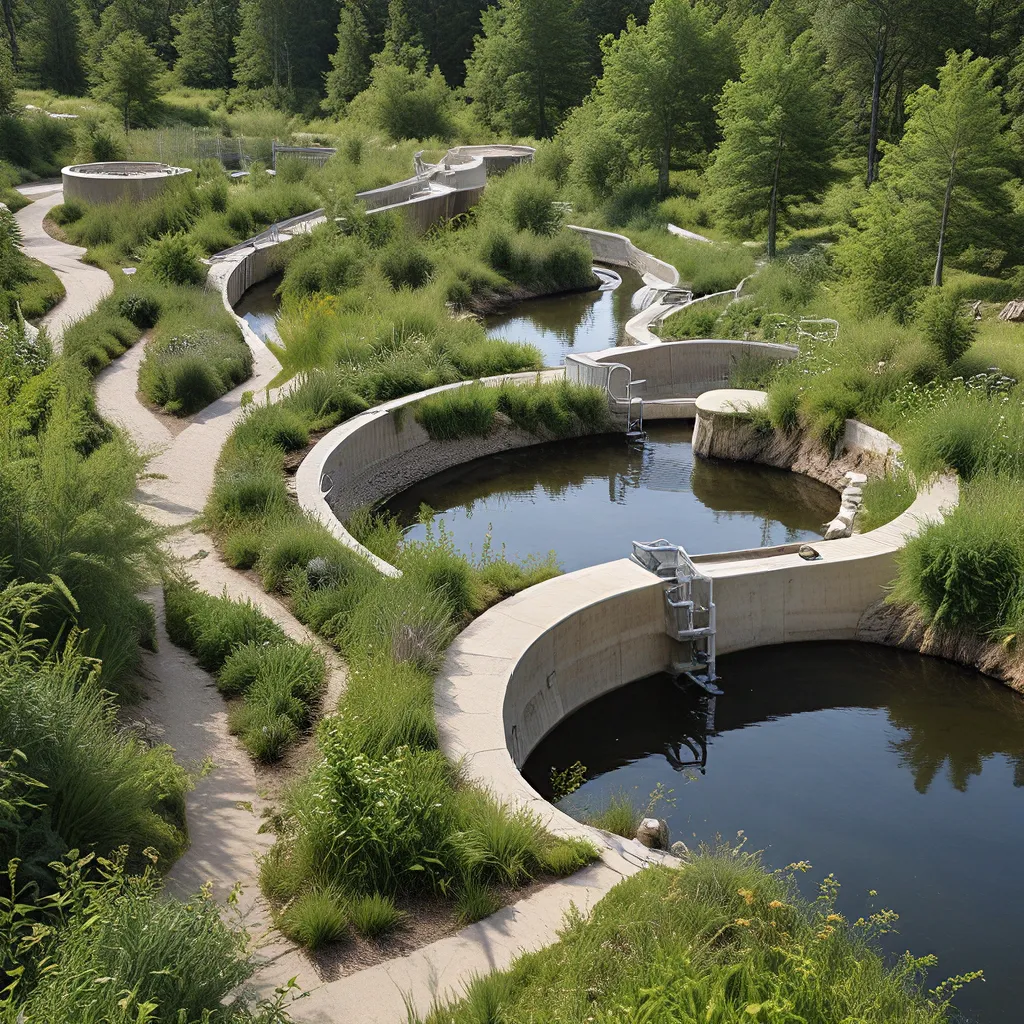
As an engineer passionate about sustainability, I’ve long been fascinated by the incredible efficiency and elegance of natural systems. And when it comes to the critical challenge of wastewater treatment, I believe biomimicry – the practice of learning from and then replicating nature’s designs and strategies – holds the key to unlocking unprecedented levels of performance and environmental responsibility.
You see, traditional wastewater treatment methods often fall short when it comes to efficiency and sustainability. They tend to be energy-intensive, resource-depleting, and can even have unintended negative impacts on the very ecosystems we’re trying to protect. But when we look to the natural world for inspiration, a whole new realm of possibilities opens up.
Lessons from Nature: Harnessing the Power of Biological Processes
Take bioremediation, for example – the use of living organisms like bacteria and fungi to break down and remove contaminants from water. This is a key component of biomimicry-inspired wastewater treatment, as it taps into the incredible metabolic capabilities that evolution has honed over millions of years. By leveraging these natural purification processes, we can develop highly effective and environmentally friendly treatment technologies.
And it’s not just microorganisms that offer valuable insights. The diversity of species and ecosystems found in nature provide a veritable treasure trove of potential strategies and mechanisms that can be applied to wastewater treatment. From the intricate filtration systems of mangroves to the self-cleaning properties of lotus leaves, the natural world is brimming with innovative solutions – if only we have the eyes to see them.
Biomimetic Membranes and Constructed Wetlands
One particularly exciting area of biomimicry-inspired wastewater treatment is the development of biomimetic membranes. These membranes, designed to mimic the structure and function of fish gills, have demonstrated enhanced filtration capabilities that can dramatically improve the efficiency of treatment processes. By emulating the elegant, energy-efficient mechanisms found in nature, engineers are creating innovative technologies that leave traditional membrane systems in the dust.
And the inspiration doesn’t stop there. Constructed wetlands are another shining example of how biomimicry can revolutionize wastewater treatment. These engineered ecosystems, designed to mimic the filtration and purification functions of natural wetlands, offer a remarkably effective and sustainable way to treat wastewater. By harnessing the power of plants, microbes, and natural cycles, constructed wetlands can remove a wide range of contaminants while requiring minimal energy input and maintenance.
Biomimetic Design in Action: The Eastgate Center and Eco-Machine
The remarkable Eastgate Center in Zimbabwe is a prime example of biomimicry in action when it comes to wastewater treatment. Inspired by the passive cooling and ventilation mechanisms of termite mounds, the building incorporates a biomimetic design that not only reduces energy consumption, but also includes a wastewater treatment system that mimics the self-purification processes found in natural ecosystems. The result? A highly efficient and environmentally responsible building that serves as a testament to the transformative potential of biomimicry.
Another shining example is the Eco-Machine at the Omega Center for Sustainable Living. This innovative system uses a series of interconnected ecosystems to treat wastewater in a completely natural way, inspired by the flow and purification processes of wetlands. By creating habitats for diverse plant and animal species, the Eco-Machine demonstrates how biomimicry can foster the development of sustainable wastewater treatment solutions that are not only effective, but also contribute to the overall health and vitality of the surrounding environment.
Overcoming Challenges and Realizing the Potential of Biomimicry
Of course, the integration of biomimicry into mainstream wastewater treatment practices is not without its challenges. Existing regulations and standards may not adequately address the unique characteristics and benefits of nature-inspired solutions, requiring collaboration between policymakers, researchers, and industry stakeholders to develop appropriate frameworks. And there are also concerns about the scalability and adaptability of biomimetic designs, which will need to be addressed through ongoing research and innovation.
But I firmly believe that these challenges are more than worth overcoming. Because the potential of biomimicry in wastewater treatment is simply too great to ignore. By continuing to study and learn from the remarkable resilience and efficiency of natural systems, we can unlock a new era of sustainable and innovative water management solutions – solutions that not only protect the environment, but also help to restore and regenerate the delicate balance of our ecosystems.
A Future Powered by Biomimicry
As the benefits and potential of biomimicry become more widely recognized, I’m confident that we’ll see a growing adoption of nature-inspired solutions in wastewater treatment infrastructure around the world. Imagine a future where constructed wetlands and bio-inspired membranes are the norm, where wastewater is transformed from a liability into a valuable resource, and where the health of our waterways and the diversity of life they support is not just an afterthought, but a central design consideration.
It’s an exciting prospect, and one that I believe is well within our reach. All we need to do is open our eyes to the genius of nature, and then put in the hard work to translate those insights into tangible, real-world solutions. Because when we harness the power of biomimicry, the possibilities for sustainable, efficient, and environmentally responsible wastewater treatment are truly limitless.
So, let’s get to work! I encourage you to **explore the services we offer at Alpha Wastewater, where we’re dedicated to bringing the lessons of nature to the forefront of wastewater management. Together, I believe we can create a future where water is treated not as a waste, but as the precious, life-giving resource that it is.